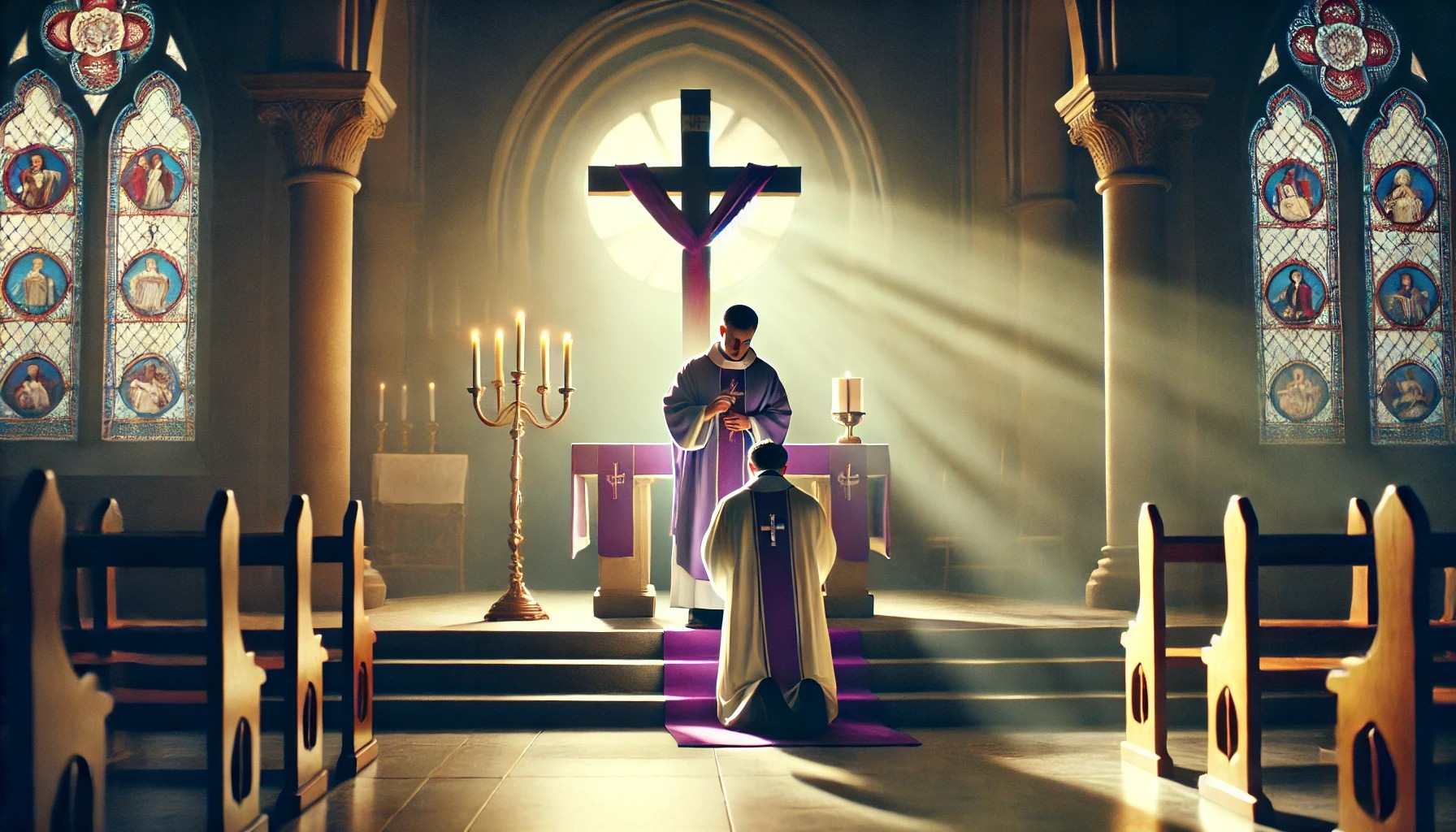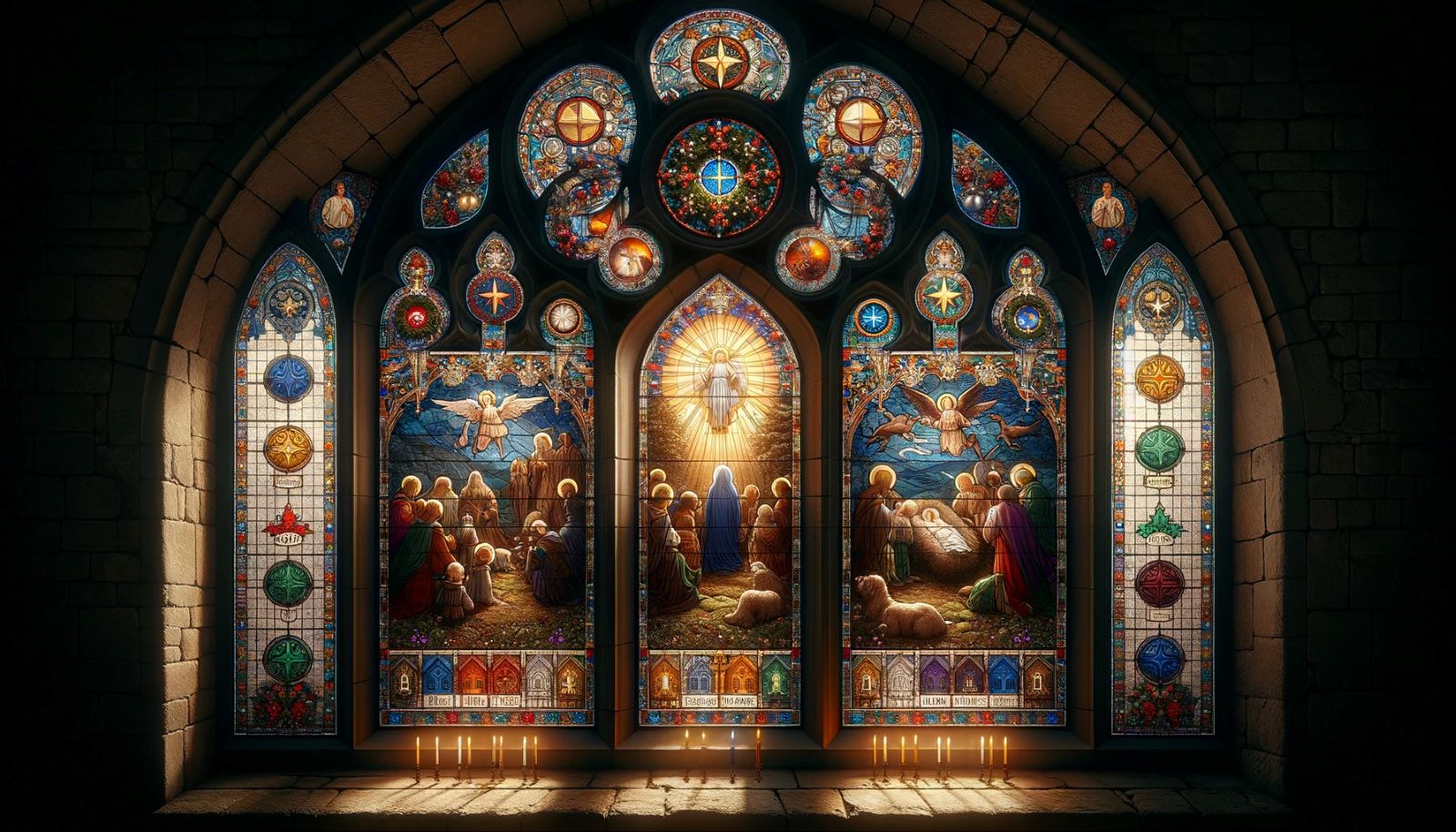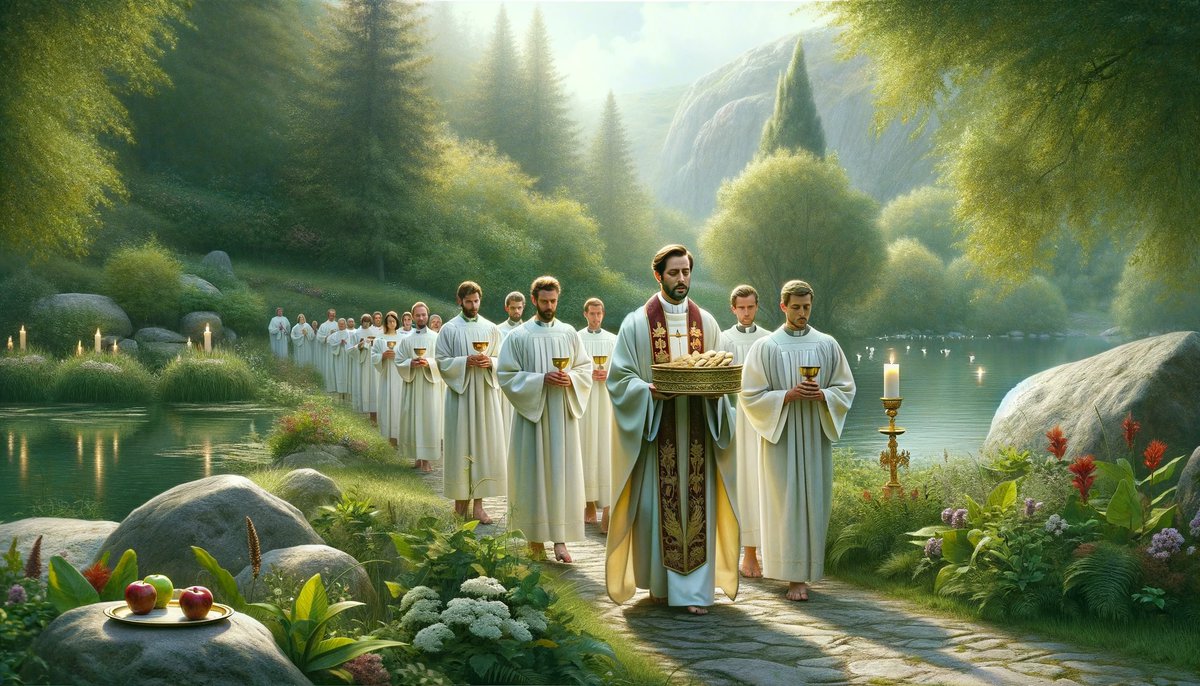Home>Christian Resources>What Is Ash Wednesday and Why Is It Celebrated?
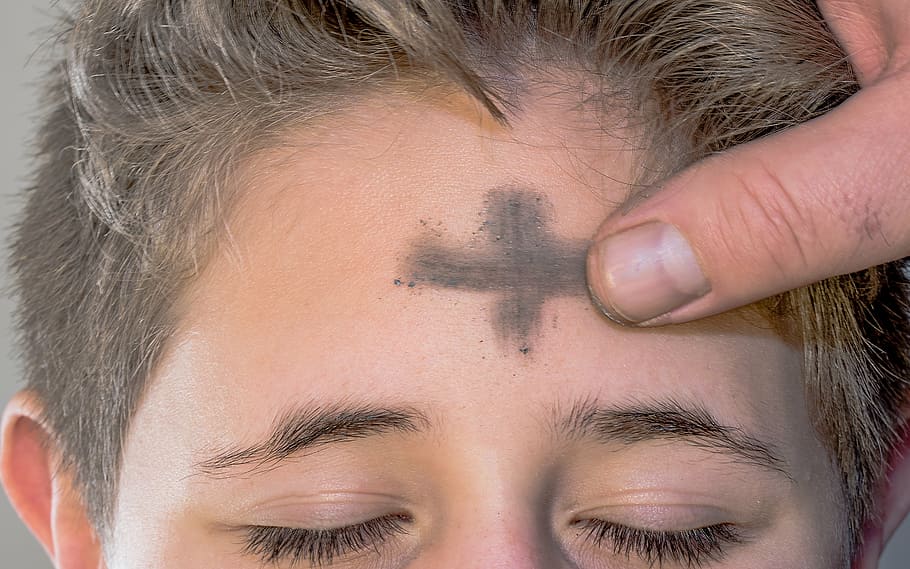

Christian Resources
What Is Ash Wednesday and Why Is It Celebrated?
Modified: January 9, 2024
Peter Smith, Editorial Director at Christian.net, combines deep insights into faith, politics, and culture to lead content creation that resonates widely. Awarded for his contributions to religious discourse, he previously headed a major organization for religious communicators, enhancing dialogue on faith's societal impacts.
What is Ash Wednesday? Know the important truths about this day that marks the beginning of the Lent season.
(Many of the links in this article redirect to a specific reviewed product. Your purchase of these products through affiliate links helps to generate commission for Christian.net, at no extra cost. Learn more)
Once a year, on a Wednesday, you may see people around your neighborhood marked with a cross on their foreheads, or otherwise, you are one of those who line up to let a priest or pastor mark a cross on your forehead with ashes. This is a Christian practice held on a Wednesday 46 before Easter and is called Ash Wednesday. But, what is Ash Wednesday? Do you know its importance? Why is it observed yearly? With the Lenten season and Holy Week impending, this is just the perfect time to understand the question and importance of Ash Wednesday.
Ash Wednesday is an important day in the Christian or liturgical calendar. It is especially of great help for those who observe Lent. On the other hand, for those who do not adhere to Lent, here are fresh and in-depth perspectives on Ash Wednesday. The following facts can help you take a closer look at this remarkable day.
What Is Ash Wednesday?

Photo by Ahna Ziegler from Unsplash
It is Ash Wednesday that marks the beginning of the Lenten season. The observance of this day happens every 46 days before Easter. Ash Wednesday starts the 40 days solemn period of Lent. It signifies the start of a very important season on the Liturgical calendar. Ash Wednesday is a Holy Day set for fasting and prayer. It denotes the beginning of the tranquil penance and fasting for Lent. Lent is a solemn practice of a six-week phase of fasting and sacrifice before Easter. This tradition is being observed in remembrance of the 40 days fasting of Jesus in the desert. Christians mirror the sacrifice Jesus had done before He began His ministry. It is a season of personal reflection and preparation for the remembrance of the resurrection of Christ. This triumph of Jesus overcoming death is what Easter celebrates.
Christians consider Easter as one of the oldest and most important festivals in history. It commemorates the day Jesus rose from the dead and had victory over Death. After Lent’s 40 earnest days of penitence and self-denial, Easter arrives full of praises and joyful remembrance. As Lent remembers Jesus’ sacrifice, Easter recalls His victory after His death. All of these events including the Holy Week before Easter happens after the Ash Wednesday. It signals a series of meaningful practices in Christian customs.
The observance of Ash Wednesday is particularly practiced by the Roman Catholic churches. The majority of Christian denominations take part in the Lent season but it is the Roman Catholics that start the Lenten season with the Ash Wednesday.
Repentance
The theme of Ash Wednesday is grief over sins knowing that it leads to death. When someone acknowledges that his or her sins hurt God and that it brings destruction, it impels him or her to turn away from it. Forgiveness is a gift from God. But, one cannot have it without acknowledging the sins he or she has done.
The entire city of Nineveh (Jonah 3) wasn’t aware that their sin causes God’s wrath to overthrow them. But when Jonah revealed God’s anger was because of the city’s sins, they began to repent with ashes and sackcloth. Sometimes, people need redirection. Sometimes, what they need is recognition. A recognition of the wrongdoings, mistakes and second chances. God is the Lord of multiple and unending chances. Whenever anyone recognizes the need for repentance, He will also recognize the need for transformation. Repentance is more than just confession and grieving. It is yielding for us a renewed life before God.
Who Celebrates Ash Wednesday?
Traditionally, Roman Catholics are the preeminent observant of Ash Wednesday. It is one of the most significant and devoted days of the Christian calendar. Hence, higher importance is given to this day compared to the other days of Lent. The tradition of Ash Wednesday comes with a marking on the Lenten calendar as it is the first day of Lent. In addition, Roman Catholics also conduct special liturgical services for this occasion.
Other Christian denominations observing Ash Wednesday are Protestants, Anglicans, Lutherans, Methodists, and Moravians. The Independent Catholics and various Reformed Faith also practice Ash Wednesday. These include the Continental Reformed, Congregationalist, and Presbyterian traditions. Moreover, some Baptists, Nazarene, Evangelicals, and Wesleyan churches practice the Day of Ashes. These different churches that celebrate Ash Wednesday follow diverse customs and services. Amid diverse observances, the essence of Ash Wednesday remains untouched.
On the contrary, the Eastern Orthodox Church does not conform to Ash Wednesday. Instead, they have the Clean Monday signaling the first day of the Lent season. They also have a different Lenten timeline compared to those of the Western Church. Their calendar is determined by the Orthodox calculation of Pascha. It includes Sundays for the forty days penance which the Roman Catholic church timeline excludes.
Customs and Observance for Ash Wednesday
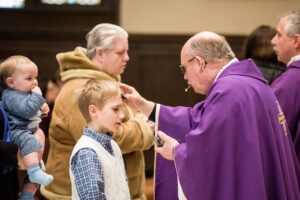
Photo by Flickr
Ash Wednesday focuses a believer’s heart to repent through the actions of fasting and spiritual preparation. Most Christian Churches observe fasting during the first day of Lent. Some fast from food for an entire day while others give up their luxuries for the Lental season. Because Ash Wednesday also implicit abstinence, many also sacrifice their vices. These practices have been historical in Christian traditions. However, besides these practices, various customs are also worth a closer peek.
What is Ash Wednesday: Marks of Ashes
Ash Wednesday obtains its name from the placing of ashes on one’s forehead as a sign of repentance. The cross streak of ashes is the dominant symbol of confession and penitence. What is Ash Wednesday without it? The Day of Ashes will not be above distinct than ordinary days if these signs are not eminent. Besides this, repentance is the focal point of the Days of Ashes. The beginning of Lent begins with this significant matter. In order to start Lent with a solemn spirit and composed heart, signs of repentance pervade this day. That is the dark ashes on the forehead shaped like a cross.
On this day, a priest, pastor, minister or any religious leader places the ashes on any participant’s forehead. They usually go with a quote or Bible verse upon doing the gesture of placing or sprinkling ashes. Some use these saying from Pope Gregory I “Remember, man, that thou art dust, and to dust thou shalt return” (Genesis 3:19). Roman Rites made an alternative remark on this in 1969 based on the gospel of Mark in chapter 1 verse 15. These words are still used today: “Repent, and believe in the Gospel”. Here are simple phrases but it means a lot deeper for Christians. It reminds individuals of their sins. Thus, allowing them to recognize the need to reflect on these sins.
Read more: What Is Ash Wednesday And Lent
Liturgical and Worship Services
The placing of ashes is usually done after a Holy Mass or Worship services. The sermon or preaching as a general rule is set on repentance on this particular day. Before participants acknowledge the ashes, they will need first to understand the matter it symbolizes. Since the ashes represent man’s nature to sin and death as well as repentance, it is the topic of sermons. The Catholic and Lutheran Churches conduct Holy Mass for Ash Wednesday. Other Christian denominations also conduct service observances particular for this day. These include Holy Qurbana, Divine Services, and Service of Worship.
Some common traditions of local church ceremonies are also quite interesting. Some churches incorporate to their services a burning of confessed sins on paper. They bring to the altar table the sins they wish to write and repent and have it all burned. It is their act of starting to live a life of penitence for the coming days.
Ashes To Go
Wednesdays are most of the time working days. Also, the majority of countries do not declare it as a non-working holiday. Hence, people are all expected to work during Ash Wednesday. This means that not everyone will have the wanted time to go to Church. However, this is not a problem. Numerous Volunteers from the Lutherans, Anglicans, Methodists and other cardinal Christian churches participate in the Ashes To Go activity.
The Ashes To Go custom is a movement where Christian leaders or clergymen place ash streaks in the form of a cross outside the church. More often than not, they do this in public places where many people pass by. These places may include parks, train stations, sidewalks, and prominent streets. This has been a form of evangelism for the past years and is still practiced today.
What’s The Reason Behind The Ashes?

Photo by Pixabay
Answering the question what is Ash Wednesday will also mean understanding its ashes. In the Bible, particularly in the Old Testament, ashes are often used as a sign of sorrow. Ash Wednesday is not mentioned in the Bible. Yet, the somber and repentance it represents are mentioned multiple times in Scriptures. In fact, the act of putting a streak of ashes on ones’ forehead derives its practice on an ancient Biblical custom. This earliest tradition requires wearing sackcloth, fasting, and covering one’s head with ashes. The people in the Old Testament do this as a sign of repentance, mourning, and sorrow to sin. It is also their way of humbling their hearts before God.
A number of incidents in the Bible depict this practice. In the Book of Esther, Esther’s cousin Mordecai and the Jews fast, put on sackcloth and ashes on their heads. They mourned and lamented while laying on sackcloth and ashes. The sorrow of the Jews was so great because the King ordered all Jews in the kingdom to be killed. Also, in the Book of Job, during his suffering, Job took broken pottery and sat on the ashes (Job 2: 1-8). Another example of ashes being used in the Bible was when Amnon raped Tamar. In sorrow after the rape, Tamar placed ashes on her head and tore the long robe that she wore. Then, she laid her hand on her head and went away crying (2 Samuel 13:11-19).
One of the most familiar stories of ashes in the Bible that symbolizes repentance is in the land of Nineveh. God sent Jonah to warn the city of Nineveh about the destruction that will come forth their land if they refuse to repent. The King upon hearing the warning Jonas preached, sat on ashes and ordered the entire city to repent. He commanded everyone in the city including their flock not to eat and wear sackcloth.
Significance of Ashes
Ashes remind Christians of two types of death. First is the death of the physical body which corrupts humanity when we fall into temptation. Second, the death of humanity to sin, that is eternal damnation. Ashes are also at times, regarded as dust. Genesis 3:19 says that God created man out of dust and to dust, man will also return. The same verse is also the phrases accompanying the gesture of putting ashes on the forehead. Ashes remind Christians of deep mourning caused by the sins of this world.
Another important part of ashes is the act of repentance. Grief over sins is futile without being responsible for it. Regrets shall compel us to turn away from sin. Ashes mark this significant issue in the Bible and we must remember that God’s forgiveness is always at hand. In truth, He wants to forgive us more than we want to be forgiven. Knowing what is Ash Wednesday about also uncovers the Biblical meaning of ashes.
Not only ashes represent our sin but it also sheds light on our transformation. Being sorry for sin is just the beginning of a changed life. Repentance points men to a new direction. This is why ashes are important symbols for Christian customs, and particularly on Ash Wednesday.
Read more: What Does Ash Wednesday Mean In Lent
Composition of Ashes
Have you ever been curious about where the ashes come from? Well, these ashes are from the Palm Sunday’s palm crosses used in the former year. Thus, burned palm leaves composed the ashes. These palm crosses commemorate the triumphal entrance of Jesus to Jerusalem (Matthew 21:1-11; Mark 11:1-11). The Jews welcomed Jesus with palm leaves on this momentous day.
Although the ashes remind men of mortality, sin, and humility, it also reminds us that Jesus is triumphant over Death. The palm leaves composing the ashes hints the victory that is to come after sorrow. Aside from this, the ashes come with a mixture of anointing oil. It is to make sure that the ashes will adhere to the head. This mixture is also a form of blessing the participants to Ash Wednesday with oil as a remembrance of their Baptism.
What Is Shrove Tuesday?

Photo by Luke Pennystan from Unsplash
As Ash Wednesday is the first day of Lent, Shrove Tuesday is the last day before Lent. It is sometimes called Mardi Gras or French for Fat Tuesday. Mardi Gras refers to a carnival celebration. Since it is the last day before Lent, it is also the last day of “fat eating” before the period of fasting. Some Christians call this the last day to feast. Even so, it is still a day of penitence and an important day in the Christian calendar. Some Christian countries also call this day a Pancake Day because its celebration includes eating pancakes.
The name Shrove Tuesday gets its name from a Christian tradition of “shriving” or “absolve”. It is a ritual of confessing one’s sin and making an absolution for it. The term absolution is a theological tradition of many Christian Churches. Shrove Tuesday is the last day of a significant season called Shrovetide before Lent. During this day, Christians consider their sins and the need to repent for it. It is a special day for examination and personal reflection. Hence, it is not at all just eating pancakes.
Beauty For Ashes
Isaiah 61:3
to grant to those who mourn in Zion—
to give them a beautiful headdress instead of ashes,
the oil of gladness instead of mourning,
the garment of praise instead of a faint spirit;
that they may be called oaks of righteousness,
the planting of the Lord, that he may be glorified.
Ashes are a symbol of grief but the good news is, God can turn the ashes on our heads into a beautiful headdress. He can turn mourning into dancing. He can turn sorrow into joy (Psalm 30). God can transform life from old into new. He can reshape one’s tattered heart into a pure fresh heart. He gives new life cleansed from the sins of our past. Steps toward this change count repentance. We can never experience a transformed life without grieving over our sins. Until the heart realizes stains engulfs it, it will never know it needs cleansing.
Most of the time we are ignorant of the fruit of sin. Other times, we choose to be ignorant and this is worse than the former. A period of contemplating on these matters is what the Lent season and Ash Wednesday is about. It allows us to have enough time for personal and spiritual reflection. When we allow God to know our sinful heart and give it to Him, He can wipe it clean. He can replace ashes with beauty. That’s how great our God is.
